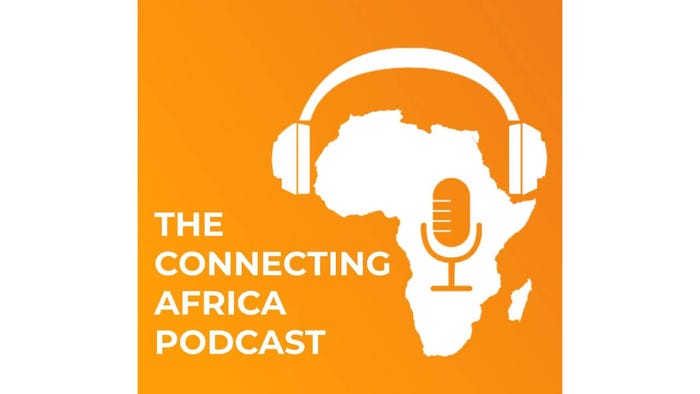A third of mobile users in sub-Saharan Africa will be on 5G by 2030 – EricssonA third of mobile users in sub-Saharan Africa will be on 5G by 2030 – Ericsson
The latest Ericsson Mobility Report predicts that 5G will make up 33% of total mobile subscriptions in sub-Saharan Africa by the end of 2030.
_(1).jpg?width=1280&auto=webp&quality=95&format=jpg&disable=upscale)
Ericsson forecasts that 5G will make up 33% of total mobile subscriptions in sub-Saharan Africa by the end of the decade.
That's according to the November 2024 edition of the Ericsson Mobility Report which predicted that overall mobile subscriptions in sub-Saharan Africa will grow at an annual rate of 4%, increasing from 950 million in 2023 to 1.2 billion by 2030.
The strongest growth will come from 5G subscriptions, which are forecasted to rise from 11 million in 2023 to 420 million by the end of 2030, a growth rate of 59% annually.
This is a big jump from the November 2023 edition of the report, which forecast around 180 million 5G subscriptions in the region by 2029, or 16% of total mobile subscriptions.
It's also much higher than recent forecasts from the GSMA, which predicted that 5G will reach 17% of total connections in sub-Saharan Africa by 2030.
Ericsson said that by 2030, 4G subscriptions will account for 35% of total mobile subscriptions, with 2G and 3G subscriptions expected to decline as the shift to 4G and 5G networks continues.
.jpg?width=700&auto=webp&quality=80&disable=upscale)
Mobile subscriptions by region and technology by percent. (Source: Ericsson Mobility Report November 2024)
"Driven by a young and dynamic population, the increasing affordability of smartphones, and the growing demand for mobile data and advanced services, the November 2024 edition of the Ericsson Mobility Report highlights the significant growth potential of mobile subscriptions in Sub-Saharan Africa by 2030," Ante Mihovilovic, VP and head of networks at Ericsson Middle East and Africa, said in a statement about the findings.
Ericsson said the mobile growth was due to handset evolution and network rollouts in urban areas.
Mihovilovic also predicted that the region will make notable strides in connectivity and digital transformation, continuing the diversification into financial technology – particularly mobile money services – and fixed wireless access (FWA).
Ericsson believes that as Africa's broadband demands increase, FWA will serve as a pivotal technology for connecting the continent.
Smartphone adoption to grow
The number of smartphones in sub-Saharan Africa is expected to rise from 540 million in 2024 to 880 million by 2030, further driving demand for data-intensive services.
"While opportunities in the sector are substantial, significant infrastructure investments and supportive regulatory frameworks will be necessary for the telecom industry to play a central role in the region’s digital transformation by 2030," the report said.
The researchers also highlighted that mobile data traffic per active smartphone is projected to grow from 5.4GB per month in 2024 to 17GB per month in 2030 in the region, representing a compound annual growth rate (CAGR) of 21%.
.jpg?width=700&auto=webp&quality=80&disable=upscale)
Mobile data traffic per active smartphone, GB per month. (Source: Ericsson Mobility Report November 2024)
Globally, mobile network data traffic is projected to grow almost 200% between 2024 and the end of 2030.
Additionally, 6.3 billion global 5G subscriptions are forecast by the end of 2030, with 60% expected to be 5G standalone (SA) subscriptions.
5G SA and 5G Advanced are expected to be key focuses for CSPs for the remainder of the decade as they deploy new capabilities to create offerings centered on value delivery rather than data volume, Ericsson added.
Middle East & North Africa forecasts
In the Middle East and North Africa (MENA) 2G and 3G subscriptions are expected to decline significantly by 2030, as service providers look into sunsetting these networks to reallocate spectrum for 4G and 5G.
By 2030, 4G will account for 37% of total subscriptions, while 5G will see the most significant growth and account for 60% of the total in MENA.
"The region's telecom industry continues to be resilient, despite broader economic headwinds. While geopolitical risks persist, and some currencies continue to face devaluation, ongoing economic diversification efforts are contributing to greater stability," the report found.
Mobile subscriptions in MENA are projected to grow 2% annually from 2024 to 2030, to total 830 million.
Smartphone penetration is increasing at 5% annually, largely driven by device affordability and network expansion.
"This trend is reshaping the region's digital landscape as more consumers gain access to advanced services such as mobile financial solutions and e-health. 5G FWA will complement fixed broadband with diverse use cases, expanding home and enterprise access options," Ericsson concluded.



.jpg?width=700&auto=webp&quality=80&disable=upscale)
.jpg?width=700&auto=webp&quality=80&disable=upscale)
_(1).jpg?width=700&auto=webp&quality=80&disable=upscale)
.jpg?width=700&auto=webp&quality=80&disable=upscale)
.jpg?width=700&auto=webp&quality=80&disable=upscale)
_(1).jpg?width=700&auto=webp&quality=80&disable=upscale)
.jpg?width=700&auto=webp&quality=80&disable=upscale)
.jpg?width=800&auto=webp&quality=80&disable=upscale)

.jpg?width=700&auto=webp&quality=80&disable=upscale)